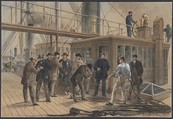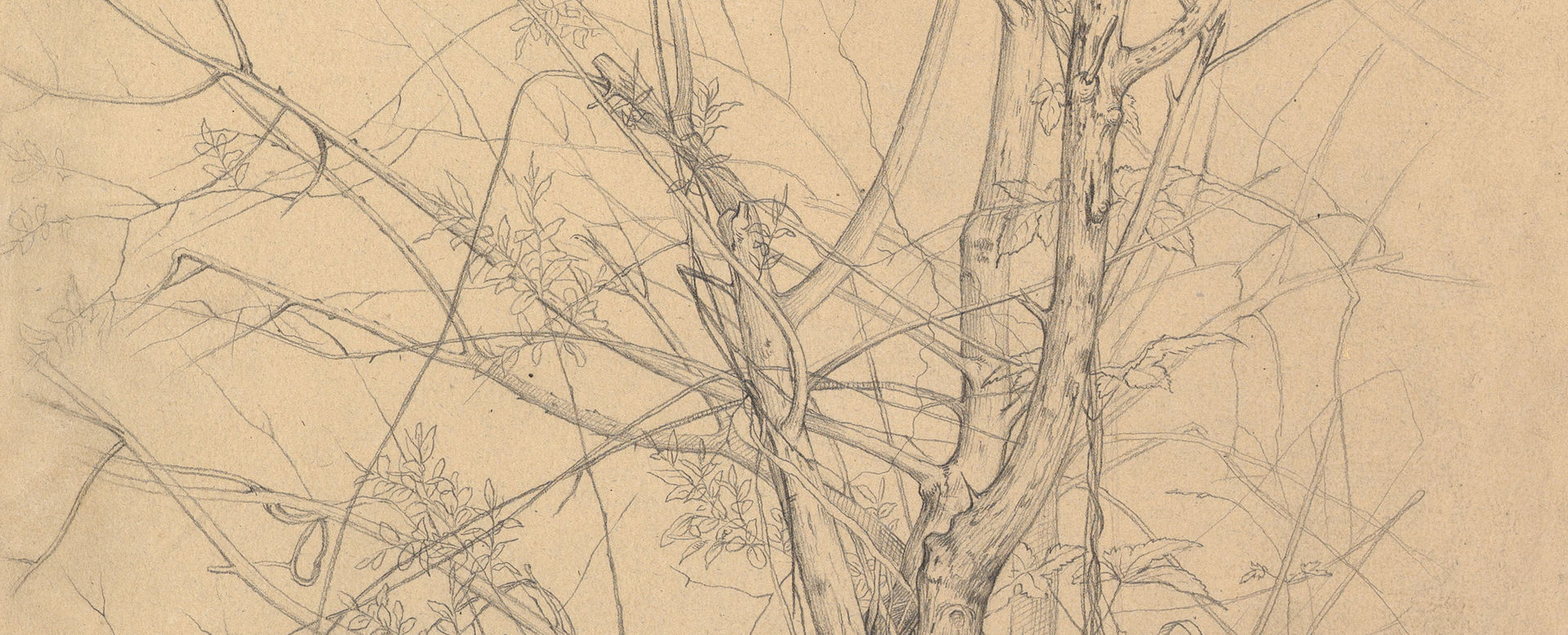Searching for the Fault after Hauling Back the Cable from the Bottom of the Atlantic, July 31st, 1865
Robert Charles Dudley British
Not on view
One of the 19th century's great technological achievements was to lay a telegraphic cable beneath the Atlantic, allowing messages to speed back and forth between North America and Europe in minutes, rather than ten or twelve days by steamer. An initially successful attempt in 1858, led by Cyrus W. Field and financed by the Atlantic Telegraph Company, failed after three weeks. Two working cables were finally laid in July and September 1866, the result of repeated efforts by the indefatigable Field, a cadre of engineers, technicians, and sailors, two groups of financial backers, and significant help from the British and United States navies. This watercolor by Dudley shows men on the deck of the Great Eastern examining the cable to find a fault on July 31, 1865. A few days afterwards, the cable snapped and was lost overboard, six hundred miles from Newfoundland; it would not be retrieved until 1866. Part of a series documenting the long, arduous process, this image was reproduced as a color lithograph in William H. Russell's 1866 book "The Atlantic Telegraph" (92.10.100 and 61.536.5). In 1892 Field donated art works by Dudley, a copy of Russell's book, commemorative medals, memorabilia, and specimens of cable to the Museum.
This image cannot be enlarged, viewed at full screen, or downloaded.



